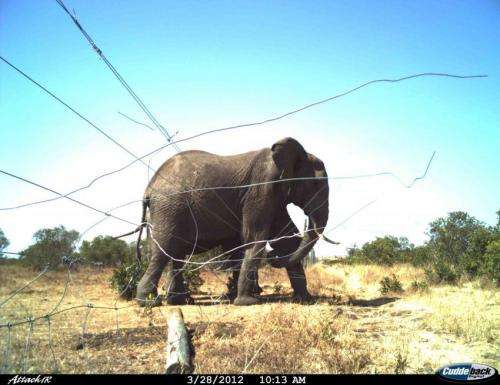Fences cause 'ecological meltdown'

The use of fenced areas to protect threatened species in the wild should be a last resort, argue scientists from the Zoological Society of London (ZSL) and the Wildlife Conservation Society (WCS).
In an article published in the journal Science, the authors state that there is a need to review the use of fencing as the conservation community develops a clearer understanding of the ecological changes caused when an area is fenced.
Fencing can have a disruptive impact on predator-prey dynamics, with species such as the African wild dog learning to chase prey into fences. For migratory herbivores such as elephants and wildebeest, fenced areas can also limit access to the vast areas of land needed to support their populations.
Human–wildlife conflict is an issue that fencing is frequently used to tackle. However, a study of 37 fences in Southern India showed that almost 50 per cent failed to prevent the passage of elephants, demonstrating the difficulty in designing and maintaining fences. As a barrier to people, fences can also spark hostility towards conservation efforts within local communities.
Lead author Prof Rosie Woodroffe of ZSL says: "In some parts of the world, fencing is part of the culture of wildlife conservation – it's assumed that all wildlife areas have to be fenced.
"But fencing profoundly alters ecosystems, and can cause some species to disappear. We're asking that conservationists carefully weigh up the biodiversity costs and benefits of new and existing wildlife fences."
Climate change is also now a factor for consideration, as barriers intended to protect species from other threats may put them at risk if they prevent animals from migrating when faced with changing climatic conditions.
The authors highlight that fencing still has a role to play in protecting species in ecosystems already badly damaged by people. For the hihi bird in New Zealand 'mainland islands' have been created using fencing to provide much needed protection from alien species, and a similar approach has been proposed to restore native wildlife, such as wolves and lynx, to fenced areas of Scotland.
But they stress that where habitat is more extensive, the priority should be to provide connected environments that can support the free movement of species, while working with local communities to help them live alongside wildlife, rather than on the other side of a fence.
Co-author Simon Hedges of WCS says: "A variety of alternative approaches – including better animal husbandry, community-based crop-guarding, insurance schemes, and wildlife-sensitive land-use planning – can be used to mitigate conflicts between people and wildlife without the need for fencing."
More information: Perspective article: To Fence or Not to Fence, Science, 2014.
Journal information: Science
Provided by Zoological Society of London
















